Product manufacturers share what’s new — and their forecasts for 2019-2025
We spoke with seven industry suppliers about their strategies and products to assist pest management professionals (PMPs) at spider accounts. Read on for their insights and announcements. We also want to know what spider management methods you’re implementing, and what you hope to add in the near future. Drop us a line at pmpeditor@northcoastmedia.net.

Dr. Chuck Silcox
AMVAC ENVIRONMENTAL PRODUCTS
Dr. Chuck Silcox
Product Development Manager
RECENT INNOVATION: Right now, AMVAC offers two products that effectively control spiders: Wisdom TC Flowable insecticide (pictured) contains the active ingredient bifenthrin, which also can control termites and other indoor and outdoor structural pests. Avesta CS contains the active ingredient lambda-cyhalothrin. It offers indoor and outdoor control of spiders, mosquitoes, ants, cockroaches, flies, ticks and more.
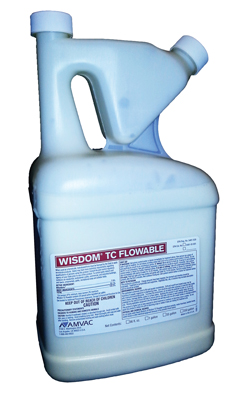
PMPs can apply Wisdom TC and Avesta CS as a residual spray to exterior structural surfaces, including siding, foundations, porches, eaves and window frames — as long as they are either protected from rainfall and sprinkler spray, or runoff from these surfaces does not drain into sewers or gutters. They also can be applied to fence lines, soil and the trunks of trees and woody ornamentals where spiders have congregated or been seen.
When making a perimeter treatment, apply to building foundations to a maximum of 3 feet above-grade, and to a band of soil and vegetation up to 10 feet wide around and adjacent to the structure. Indoors, apply them as a coarse, low-pressure spray to areas where spiders hide, such as baseboards, corners, closets, around water pipes, behind and under refrigerators, cabinets, sinks, furnaces and stoves. Pay particular attention to cracks and crevices where smaller spider species may seek harborage.
PREDICTIONS: It has been more than 30 years since a residual contact insecticide with a novel mode of action has been introduced to the industry. It is unlikely that will change in the near future.

Dr. Janis Reed, BCE
CONTROL SOLUTIONS INC.
Dr. Janis Reed, BCE
Technical Service Manager, Product Development Team
RECENT INNOVATION: Control Solutions Inc. (CSI) has a full line of products for the PMP’s spider management toolbox. Stryker 54, for example, is formulated to flush, knock down and kill a wide of variety of pests, including spiders, while leaving no residual insecticide behind.
For outdoor spider infestations, consider CSI’s Stryker Wasp & Hornet Killer. Applicators can remain at a safe distance of up to 20 feet away and still provide quick knockdown of these pests.
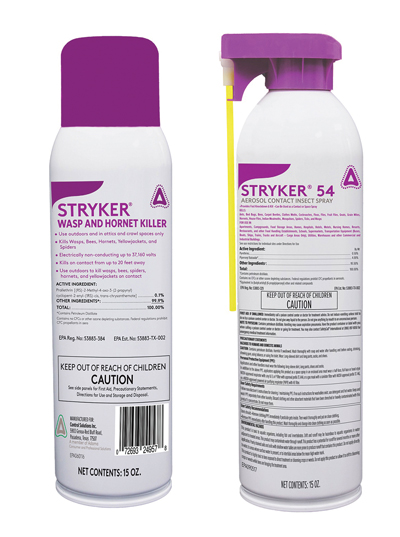
Using non-repellents on spiders, meanwhile, requires a change in strategy: Do not remove webs. On the initial service, apply CSI’s Fuse in all labeled areas spiders are seen — then wait. The spiders will encounter the material and die in their webs. Once this has occurred, remove the webbing.
For a more traditional approach, consider a repellent product like Cyzmic CS. Very little of a spider’s body comes in contact with treated surfaces, but the CapVantage technology featured in Cyzmic CS means the microcaps adhere to the exoskeleton of the insects, increasing the chances for the product to affect spiders in a treated area.
PREDICTIONS: Spiders will continue to be a problem that causes the phone to ring. New and novel products will continue to be developed and launched, but there will be some trials. Additional regulations may be imposed on how, when and where applicators can apply products. Applicators may choose alternative active ingredients, more removal services or non-chemical strategies where appropriate.

Richard Spigler, BCE
FMC PROFESSIONAL SOLUTIONS
Richard Spigler, BCE
Market Specialist, Pest Segment
RECENT INNOVATION: In June, FMC introduced Scion insecticide with UVX technology for the management of spiders and other household pests. FMC’s proprietary UVX technology is custom engineered for the pest management industry, and features multiple components: a readily available active ingredient for immediate control; defined release active ingredient for continuous residual performance; and durability in the toughest conditions, including intense sunlight and harsh surfaces.
Scion insecticide’s pyrethroid active ingredient, gamma-cyhalothrin, allows for a lower use rate. It features a broad label that allows for applications to exterior and interior areas of residential and commercial accounts.
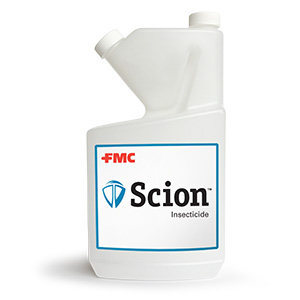
FMC recommends using the highest of Scion’s three labeled exterior perimeter rates, focusing applications on areas where spiders are resting/hiding and constructing webs. Any vegetation around structures is conducive to spider activity. Given that night-flying insects are easy prey, inspect around exterior lighting for spiders and their webs. Reducing spiders’ food — insects and arthropods — will also help.
PREDICTIONS: Spiders continue to be a primary concern for PMPs, and FMC continues to work to develop better solutions to help PMPs grow their businesses. New formulation advancements like UVX technology, combined with constantly improving integrated pest management (IPM) strategies, will help PMPs provide even better results.

Dr. Reid Ipser
NISUS CORP.
Dr. Reid Ipser
Technical Services Director
RECENT INNOVATION: Controlling spiders is tricky, because spiders can reduce their chance of contact with insecticides thanks to their tarsi. Try a different tactic with a product like Web Out, an EPA 25(b) exempt product that is biodegradable, non-toxic, non-corrosive and non-flammable; it can even be used over water at marinas. It helps prevent spiders from attaching silk to the treated substrate, compromising web building and keeping treated areas clear for 120 days inside and up to 90 days outside, depending on shelter from weather.
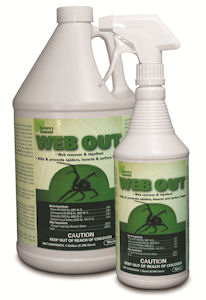
Apply Web Out to your brush and to the substrate surface prior to web removal to break down the web structure and simplify the cleaning of spider web areas, web residue and stains. Web Out also can be used as a contact kill product for spiders and several other pests.
Nisus also offers Fireback Bed Bug Spray and Jet aerosol. It kills on contact and includes a three-month residual. Fireback’s U-straw delivers two different spray patterns, which gives PMPs the flexibility to use it both as a crack-and-crevice and as a space spray. Spraying surfaces will help prevent spiders from attaching webbing, whereas a space spray contacts hiding spiders in hard-to-reach areas. It also can be used against many additional listed flying and crawling pests, including ants, cockroaches, houseflies, mosquitoes, crickets, scorpions and millipedes.
PREDICTIONS: The future of spider control will focus on sanitation around the structure, with perhaps a separate service for just using web dusters. This spider-only service would focus more on sanitation/augmentation practices, and also use essential oils with an occasional micro-cap.

Dr. Cisse Spragins
ROCKWELL LABS
Dr. Cisse Spragins
Founder and CEO
RECENT INNOVATION: EcoVia WD Wettable Dust is a versatile tool for exterior spider management. Applied as a dust or as a wettable powder, it features killing action as well as strong repellency and long residual protection to deter web building and structural entry. As an exempt 25(b) product, it does not have label restrictions for use near and over water — making it ideal for boat docks and boat houses, or for impervious surfaces. The dust can be applied to the head of a web duster and applied when knocking down cobwebs.
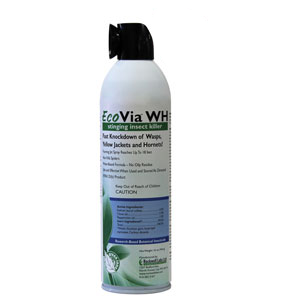
One of our newest products is EcoVia WH (pictured). This foaming jet aerosol is the quick solution for shooting spiders from a distance of up to 18 feet. The remaining residue is not oily or visible, but deters web-building until it is washed away.
For interior control, CimeXa Insecticide Dust is the ideal choice for long-lasting killing power without repellency. It will last up to 10 years if undisturbed.
PREDICTIONS: Spiders are a challenge because of their biology and morphology. There isn’t one silver bullet for spiders, as there is a large amount of species diversity, as well as diverse treatment areas. Identifying at least the category of spider will help to guide treatment.
Treating infestations of medically significant spiders adds another dimension. Brown recluse spiders (Loxosceles reclusa), for example, are spreading to more parts of the United States, and require thorough treatment of potential harborage areas. At the same time, spiders traditionally have not been one of the main revenue pests for PMPs, so there aren’t many products really developed specifically for spider control — they often are lumped in with general perimeter pests. That might change as public health needs evolve.

Dr. Nicky Gallagher
SYNGENTA
Dr. Nicky Gallagher
Technical Services Manager, Professional Pest Management
RECENT INNOVATION: The SecureChoice Spider Assurance Program from Syngenta features the efficacy of Demon WP insecticide with Demand CS insecticide, or Demon WP with Tandem insecticide, to provide a significant reduction in spider populations. As components in an IPM strategy, this expert-designed protocol is guaranteed to deliver results.
Make spot treatments with Demon WP in spider web locations and adjacent areas. The product’s easy-to-use wettable powder formulation, strength, speed and staying power can help provide a quick initial knockdown of spiders. Ensure Demon WP has been applied to all heavily spider-populated areas before removing webs post-treatment.
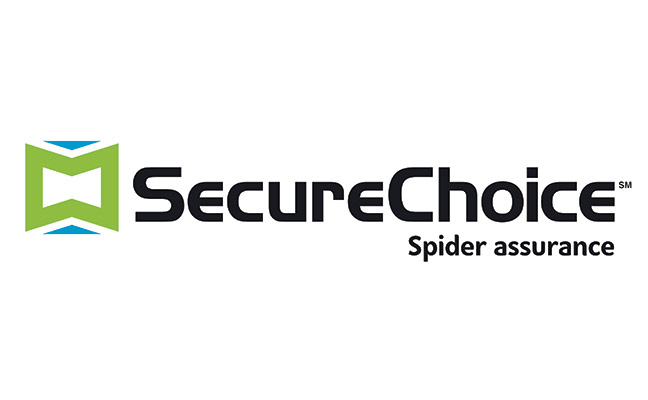
A follow-up application of Demand CS or Tandem can help provide long-lasting residual control of spiders with the power of iCAP technology: Microcaps of multiple sizes release the active ingredient at different times to provide control that can last between service routes. The microcaps also maintain their shape to ensure the product remains effective on porous surfaces, even when exposed to outdoor conditions. Because of the limited contact spiders have with treated surfaces, the iCAP technology in Demand CS and Tandem ensures residual control, even during hot times of the year.
PREDICTIONS: Climate change will fundamentally alter our relationship with urban pests, including spiders. We may not see significant changes over the next few years, but research indicates that changes already are happening in many parts of the world. Ecological niche modeling that investigates the present and future distribution of the brown recluse spider, for example, indicates the pest may end up expanding its range northward. Training, communication and proper insecticide applications will be extremely important in dealing with these kinds of spider changes.

Mel Whitson
ZOËCON PROFESSIONAL PRODUCTS
Mel Whitson
Senior Field Technical Service Manager
RECENT INNOVATION: Zenprox Xtend Aerosol is the latest solution from the Zenprox family of products to help PMPs effectively control spiders. With a 360° valve and a crack-and-crevice actuator, PMPs are able to easily target various locations around client’s homes. In addition to controlling spiders, Zenprox Xtend also is labeled for bed bugs, carpet beetles, cockroaches, crickets, pantry pests, ants and many other crawling and flying insects. For larger spaces, Zenprox EC can be used with an ultra low-volume (ULV) generator for quick application and powerful spider control.
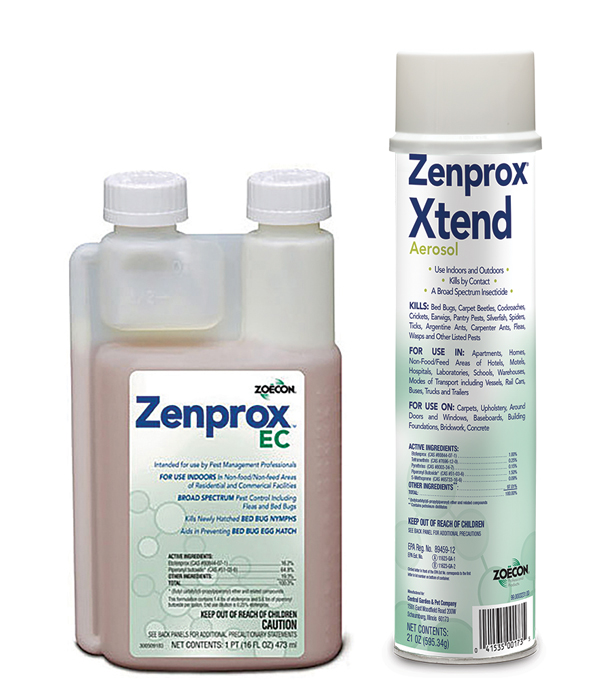
Zoëcon continues to develop new and innovative products that will help with a PMP’s day-to-day calls. One concept is for the control of brown recluse spiders. We’re also looking into expanding treatment locations for greater and longer-lasting control.
PREDICTIONS: Within the next five years, our team envisions a PMP spider control toolbox that will have an even stronger label expansion into landscapes where spiders often are found. With a target-focused product, PMPs would be able to control spiders found on shrubs, ornamental rocks and landscape decorations with greater efficacy — and without customers worrying about the effects on their lawns.
*Featured photo: iStock.com/grebeshkovmaxim
Leave A Comment